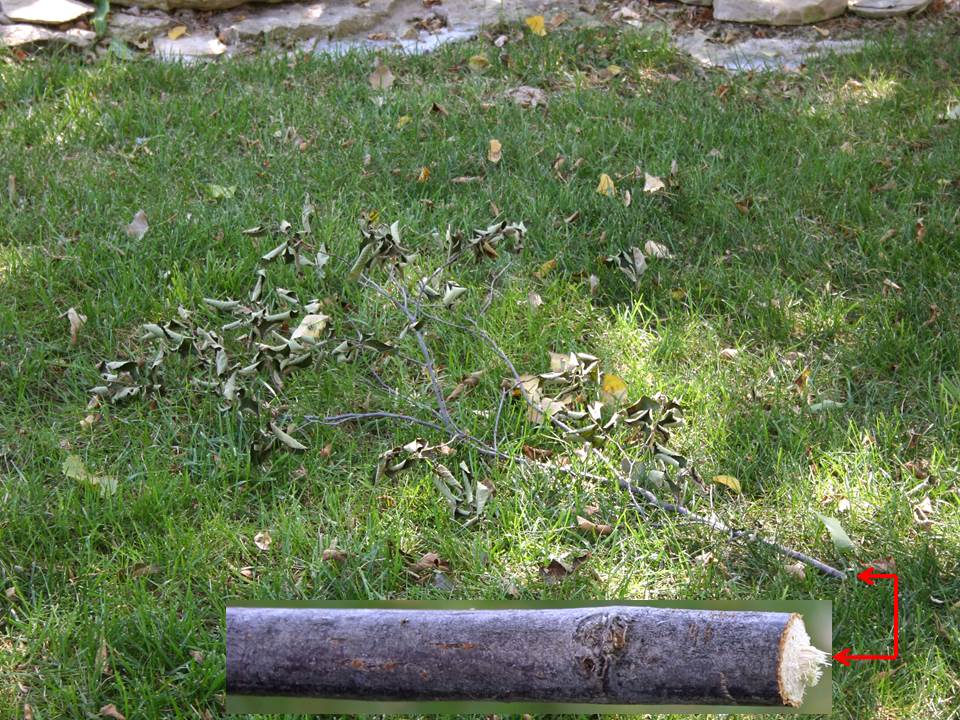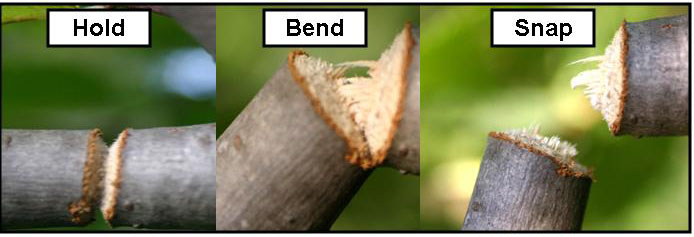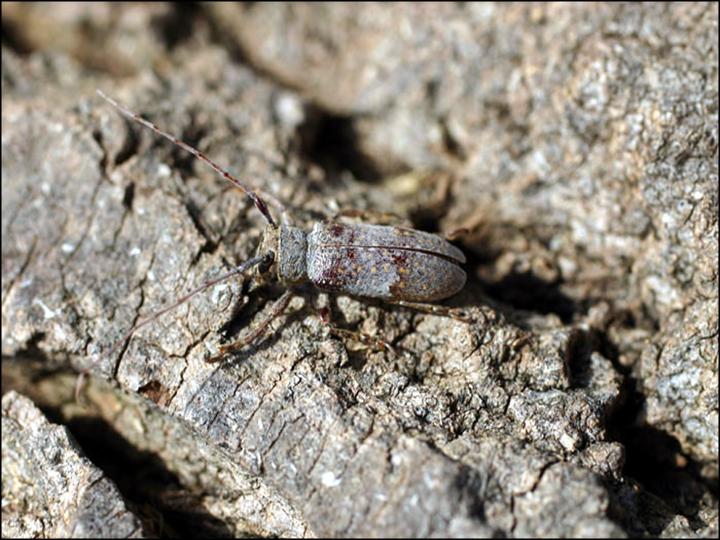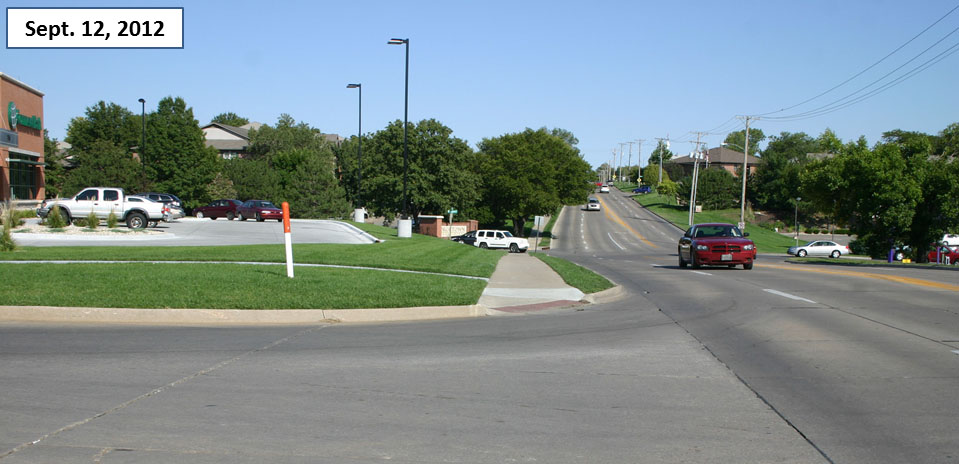–by Dr Bob Bauernfeind
There are times when I struggle coming up with a “timely topic” for the Kansas Insect Newsletter. But then I encounter something that “ignites the fire”.
The spark? – Yesterday morning (Labor Day), I went out to water my tomatoes. I noticed a portion of a branch lying on the ground. Picking it up, the end/break point had the characteristic smooth buzz saw cut pattern of a twig girdler.
Why, “at last”? Over the years, I have collected fallen branches from various sites in the Manhattan area. Why (in the 22 years that I have lived here) had I never experienced twig girdler activities around MY HOME? As I often relate to people when trying to explain insect activities, “There is no valid explanation. Sometimes that’s just the way things happen”. But as an entomologist (and paraphrasing Bruce Willis’ Diehard character), Yippee-ki-yay!
The following is a cut-and-paste from a previous Kansas Insect Newsletter. So possibly (for some) this will be “old news”, but a useful review. For first time readers, this hopefully will be interesting and informative “new news” regarding the seasonal activities of Oncideres cingulata, the longhorned beetle commonly called the twig girdler.
Given its name, the image below shows a “fresh girdle”.
One has but to look at the head of a twig girdler to realize that it is well-equipped for the girdling task. The head is compressed from front to back, and somewhat elongate from top to bottom —- just right for allowing it to fit into the V-shaped girdle it creates. Under magnification, her mandibles resemble the “jaws-of-life” rescue equipment —- stout and strong, ready to cut/girdle branches ranging in size from 6 to 13 mm in diameter —- apparently dependent on the size of the individual female beetle whose legs are uniquely positioned —– her 4 front legs to encircle/grasp, and her hind legs positioned rearward and utilized to anchor against.
The girdling process is not a complete shearing of branches. Rather, the smooth cut stops, but an intact central core remains, thus preventing the branch from dropping. However, because girdling severs vascular elements, the portion of the branch beyond the girdle dies and dries out. This results in the central core becoming brittle. It is at this point, then, the weight of the branch (with or without the aid of the wind) overcomes the ability of the core to support the branch. The core snaps and the branch falls to the ground.
Twig girdlers have a wide host range including hickory, pecan, dogwood, honeylocust, oak, maple and hackberry. While hackberry is listed as “high” on the list of hosts, in Kansas, most reports of littered lawns occur beneath elms. This preference for elm over hackberry was exemplified in an observation of side-by-side girdled elms and untouched hackberry trees.
Several questions arise regarding girdlers:
Why do they girdle branches? The larvae of twig girdlers require a “drier wood” for their growth and development. Beetles deposit their eggs beyond the “cut” thus ensuring the survival of the larvae in the fallen branches. Beetles gnaw through the bark (creating an ovipositional scar) and deposit an egg just beneath the bark. Egg sites can easily be detected by closely examining areas near twig side shoots.
Of what harm are girdlers? This depends on where and what they are girdling. In nut production orchards, twig girdlers can be detrimental when damaging newly transplanted trees or stymieing/setting back young trees not yet in production mode. In harvestable orchards, there have been reported incidences of reduced nut production and reduced yields following extensive twig girdler activities the previous season.
Can people monitor for the presence of twig girdlers and apply an insecticide treatment to eliminate them before their girdling activities? This is impractical. There is not a single succinct time of beetle appearance. Rather, their emergence pattern is lengthy, spanning from late August into October. This being said, the impracticality continues. It is not possible to inspect large trees for the presence of beetles. And while twig girdlers have a very distinctive appearance, they can be easily overlooked because they blend in to the background.
For homeowners, twig girdlers are more of a nuisance in causing the aforementioned branch litter. The recommendation is to gather up and dispose of branches. This will eliminate those beetles which emerge the following year. However, this does not mean that twig girdlers won’t appear the following year: look up, and you may see many more dead branches still attached or caught up in tree canopies.
For certain, there is one site where girdling activities have ceased.











